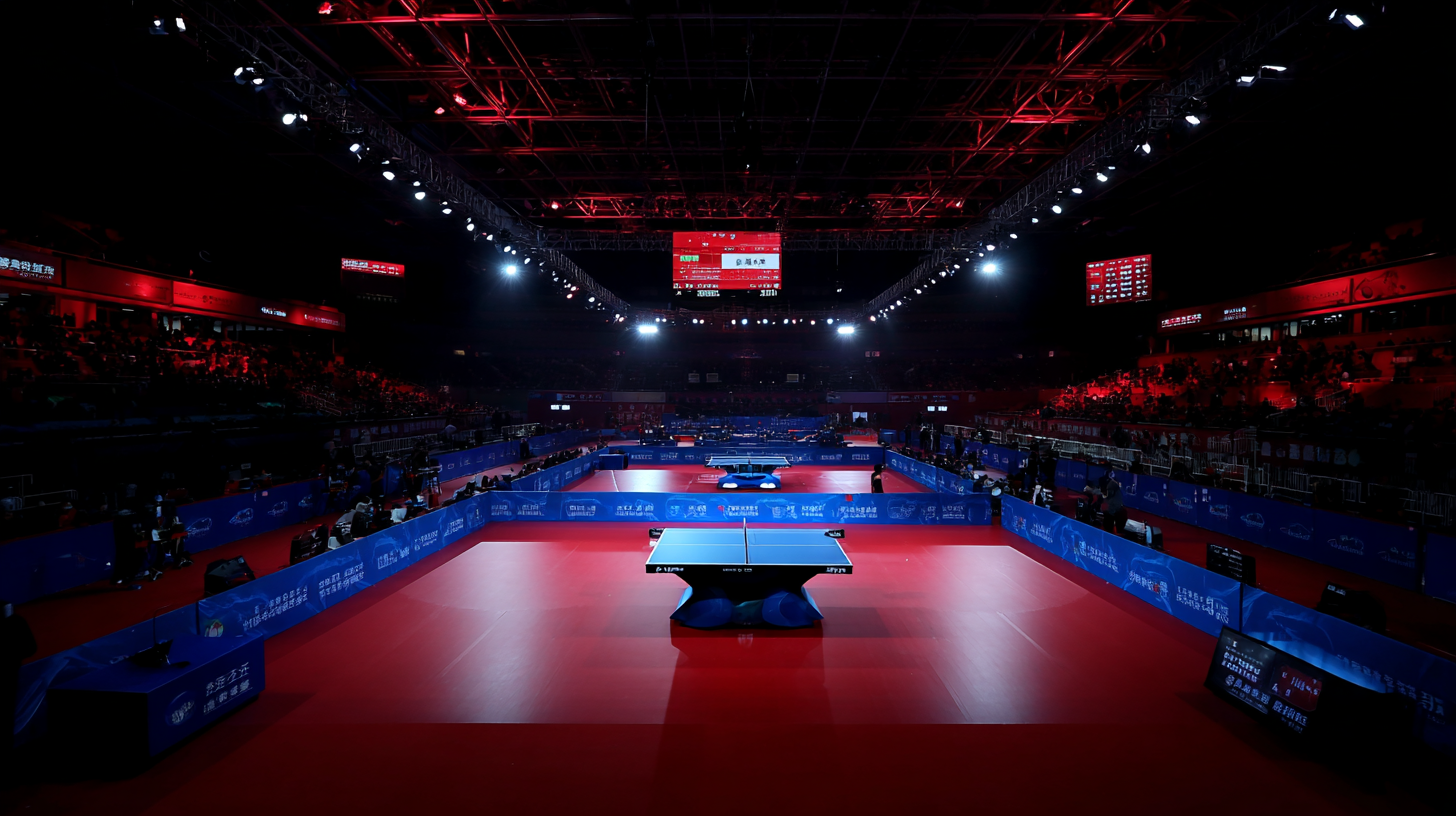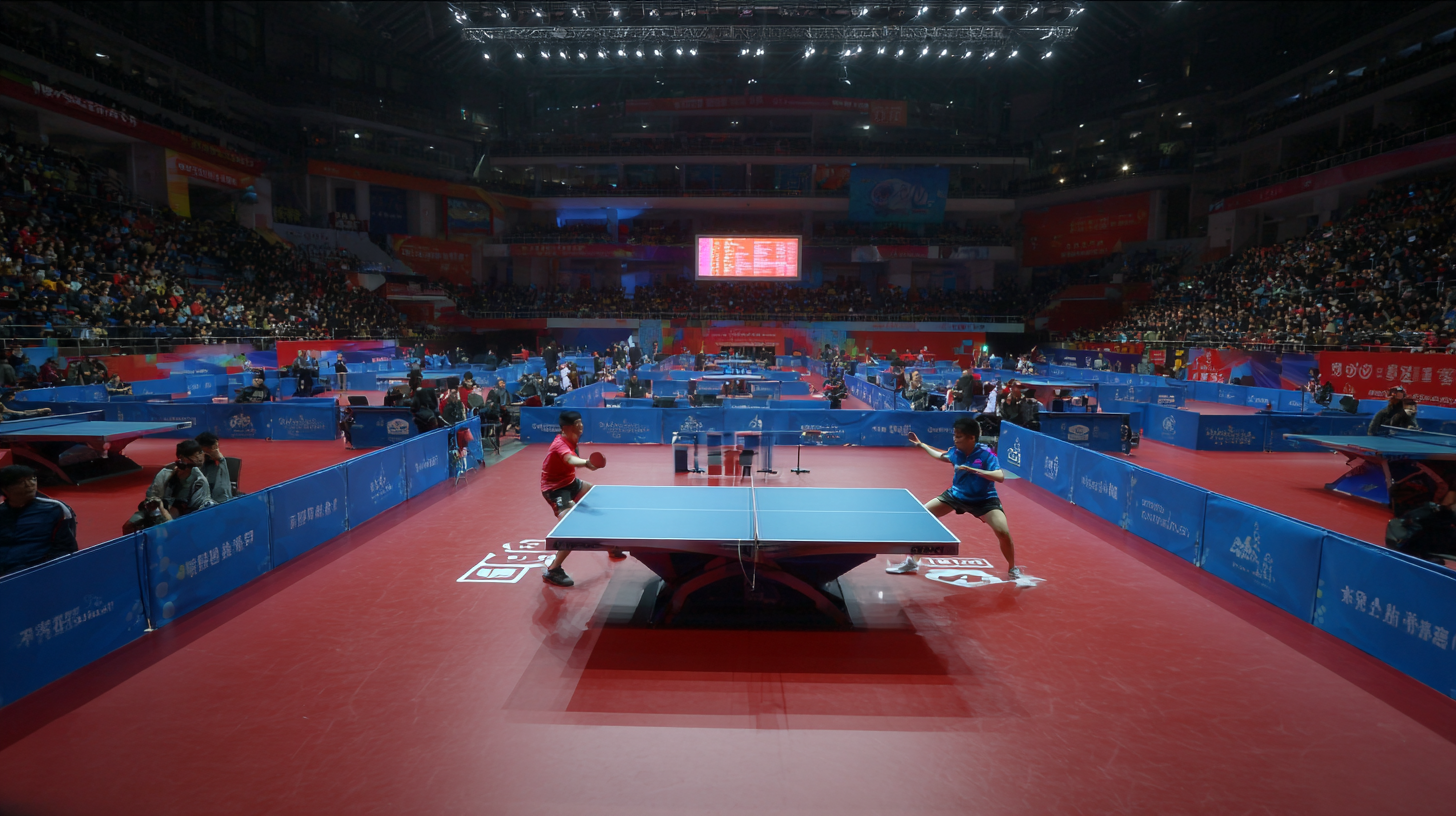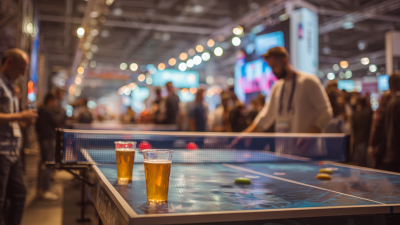As we approach the 2025 China 138th Import and Export Fair, an exciting opportunity presents itself to explore the future of innovative products and cultural events, particularly the Ping Pong Cup Game. This dynamic event not only highlights China's passion for table tennis but also embodies the spirit of international trade and collaboration. The Ping Pong Cup Game serves as a unique platform to showcase emerging trends in sports and entertainment, resonating with both domestic and global audiences. By examining how this game integrates with various aspects of the fair—from technology and merchandising to cultural exchange—we can gain insights into the potential transformations in leisure activities during this auspicious event. The fair stands as a testament to China's vibrant marketplace and serves as a launching pad for the evolution of the Ping Pong Cup Game into a beloved international phenomenon.

The popularity of ping pong, a sport deeply ingrained in Chinese culture, has seen a remarkable upswing in global participation and viewership. As we approach the 2025 China 138th Import and Export Fair, this trend reflects not only local enthusiasm but also a growing international market for ping pong products, including equipment and accessories. With increased awareness of the health benefits associated with playing table tennis, such as improved hand-eye coordination and physical fitness, more individuals and institutions are investing in ping pong as a recreational and competitive sport.
Market forecasts suggest that this rise will continue, driven by the increasing number of grassroots initiatives, training programs, and international tournaments. The integration of advanced technology in ping pong equipment and training methods is also notable, providing players with enhanced performance metrics, which is appealing to both amateurs and professionals alike. As the industry evolves, we can anticipate innovative designs and marketing strategies to capture the interest of potential players, ensuring that the sport remains vibrant and relevant leading up to the fair in 2025.

The 138th Canton Fair, a pivotal event in global trade, brings to light significant transformations within the ping pong industry, particularly influenced by international trade agreements. As countries negotiate new tariffs and trade policies, manufacturers and distributors of ping pong equipment are navigating these changes to enhance competitiveness. The fair serves as a strategic platform for companies to showcase innovations in ping pong gear, which may soon be shaped by varying regulations and market demands stemming from these agreements.
Additionally, the impact of global trade dynamics extends beyond mere pricing strategies; it influences supply chains, sustainability practices, and collaborative ventures among nations. As the ping pong industry adapts to these evolving conditions, stakeholders are keenly aware of the need to align their business models with emerging trade frameworks. This not only affects product offerings at the Canton Fair but also encourages cross-border partnerships, fostering a more interconnected global market for ping pong enthusiasts and professionals alike.
The global table tennis market is poised for significant growth, with projections indicating an increase from USD 0.26 billion in 2024 to USD 0.55 billion by 2033, marked by a compound annual growth rate (CAGR) of 8.8%. This growth trajectory can be attributed to evolving consumer preferences that increasingly favor high-quality, innovative ping pong equipment. As consumers become more discerning, manufacturers are prompted to enhance their product offerings, focusing on durability, design, and technological integration.
Amid these evolving consumer preferences, there is a growing interest in advanced training tools such as ping pong ball machines, which are expected to see a CAGR of 5.9%, potentially reaching a market value of USD 1,500 million by 2035. These machines not only facilitate skill development and practice but also cater to the rising demand for efficiency in training methodologies. As the landscape of table tennis evolves, understanding and adapting to consumer behavior will be integral to stakeholders aiming to thrive in this competitive market.
| Feature | Consumer Preference (%) | Market Trends | Projected Growth (2023-2025) |
|---|---|---|---|
| Material Quality | 78% | Sustainable materials gaining popularity | 15% |
| Design Innovation | 65% | Minimalist and ergonomic designs | 10% |
| Price | 70% | Competitive pricing amid economic shifts | 12% |
| Brand Reputation | 55% | Influence of social media on brand trust | 8% |
| Technological Features | 60% | Integration of smart technology | 20% |
The future of ping pong, particularly in the context of the 2025 China 138th Import and Export Fair, looks promising as technological innovations are set to transform the gameplay experience. Recent advancements highlight how robotics and artificial intelligence can enhance training and competitive play. For instance, ping pong robots equipped with high-speed precision technology are revolutionizing practice sessions, enabling players to improve their skills with consistent and accurate ball returns. Such advancements not only cater to professional athletes but also offer therapeutic benefits for individuals with conditions like Parkinson’s, who have shown significant improvement in motor skills through structured ping pong exercise programs.

Moreover, initiatives like 3D technology training systems are poised to reshape how enthusiasts learn and develop their table tennis skills, ensuring that players of all levels can benefit from interactive and engaging training methods. As these technologies gain traction and are showcased at events like the Import and Export Fair, the integration of sports and tech will continue to redefine the landscape, making ping pong more inclusive and dynamic. This intersection of innovation and athletics promises to elevate the game to new heights, further popularizing ping pong as both a competitive sport and a means of rehabilitation.
The Ping Pong Cup Game is poised to transform China's export landscape significantly in 2025, particularly in the wake of the 138th Import and Export Fair. As one of the nation’s cultural cornerstones, the game has not only bolstered domestic engagement but also attracted international interest, further enhancing China's global trade relations. According to recent data from the China Sports Industry Report, the growing endorsement of ping pong, illustrated by a 20% increase in participation rates among youth, is expected to drive merchandise exports, particularly sports equipment, by approximately $150 million.
Moreover, the economic implications extend beyond mere equipment sales. The event is anticipated to stimulate related industries such as tourism and hospitality, as foreign visitors flock to witness this culturally rich exchange. A report by the China National Tourism Administration indicates that sports tourism, which includes attendance at events like the Ping Pong Cup, could generate an additional $2 billion in revenue. This synergistic relationship highlights the importance of sports events in reinforcing China's export capabilities while integrating cultural diplomacy into international trade strategies, ultimately positioning the nation as a leader in both sports and exports.






